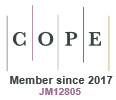Just Accepted
This article has been peer reviewed and accepted for publication. It is in production and has not been edited, so may differ from the final published form.
Modelling menstruation in the common mouse: a narrative review
Abstract
Despite occurring in up to 50% of the human population, menstruation is a fundamentally understudied process with limited treatment options when menstrual pathologies arise. One reason for this deficit is the inherent ethical and technical constraints associated with researching menstruation. The multifactorial nature of many menstrual-related pathologies means in vivo research is necessary; however, this type of research is difficult in humans, and non-human species that menstruate naturally are often not suitable as research models. Consequently, most menstrual research relies on an artificially induced menstrual-like process in the non-menstruating laboratory mouse. This review investigates mouse models of menstruation and how specific technical variables are used to produce or modulate a menstrual-like process. The review describes two key categories of model, those that are ovariectomy-based versus those that are pseudopregnancy-based. The menstrual-like process occurring in these models varied slightly with the underlying reason for the variation likely the method of progesterone withdrawal. Models that withdrew progesterone specifically had a far less rapid endometrial breakdown in comparison to those that withdrew all ovarian input. These outcomes suggest that a loss of ovarian factors other than progesterone is likely impacting the breakdown process. The review highlights the gaps in our understanding of the mechanisms of endometrial breakdown and repair in these proxies for menstruation and the subsequent impacts on any conclusions drawn from these models.
RD25055 Accepted 14 July 2025
© CSIRO 2025



